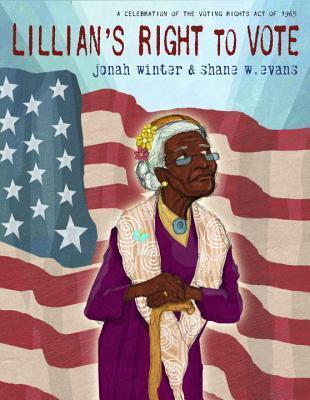
Lilian's Right to Vote
Read Aloud Book: Lilian's Right to Vote
Story and Illustration: Jonah Winter, Shane W. Evans
ISBN-13: 978-0385390286
C3 Framework Key term:Role (of citizens): The actions of citizens to fulfill their responsibilities to their political community.
Handouts
The Things that Qualify a Colored Man to Vote in the Southern States (PDF version only)
Download and Print the PDF
Synopsis
On her way to the polling place, a senior African-American woman thinks about the people who wanted to vote but were denied, starting with her great-great-grandparents. She reflects on the accomplishments of the people who bravely fought to give African-American people the right to vote.
Discussion
Say: The Voting Rights Act of 1965 prohibits racial discrimination in voting. The Act enforces the 15th Amendment of the United States Constitution: “The right of citizens of the United States to vote shall not be denied or abridged by the United States or by any State on account of race, color, or previous condition of servitude.” Distribute copies of a page from the pamphlet “What a Colored Man Should Do To Vote” (included in this lesson plan). Ask: Do the requirements listed in the pamphlet seem ethical? Spark a discussion and say: Think about a person who does not know how to read and write and has no knowledge about the merits and agendas of the candidates. On elections day, how can he or she be sure they are voting for the right person? To what extent they are vulnerable to manipulation by political advocates who stand next to the entrance to the polls? Encourage students to think critically about the issue and ask: Should concerns about manipulation of voters be sufficient reason for denying voting rights? Could the restriction of voting rights to some segments of the population become a slippery slope and possibly extended denial of voting rights to other groups of people as well?
Ethics Connection
Distribute copies of the handout, History of Voting in America. Say: We will use Washington State as a case study for examining the role of states in enabling citizens to vote. Each state has the autonomy to decide on the conditions under which citizens cast ballots. These conditions affect the ability of citizens to vote (given that citizens may have accessibility problems due to work, health, family, or other reasons). Today, there are still differences among states on multiple conditions including: (1) permitting no-excuse early voting and absentee voting; (2) online voter registration; (3) same-day voter registration. Provide a current example: A few Southern states require voters to show a state-issued photo ID such as a driver’s license or a passport at the polls, to prevent voter fraud. However, statistics show that hundreds of thousands of people, concentrated in high-poverty areas do not have either of those. Ask: What are the pros and cons of granting individual states the autonomy to determine voting accessibility laws? Set ground rules for responding to this question. Remind students to use respectful language and to use the following steps when responding to each other: a. Restate the opinion you agree or disagree with; b. Indicate what you agree or disagree with. C. Support your reasoning with an example or evidence.
Fun Activity
Distribute copies of the one-page article Selma-to-Montgomery March National Historic Trail & All-American Road available at the National Park Service website. Ask students to draw a map that shows the 54-mile Selman-to-Montgomery National Historic Trail; it should include nearby highways, rivers, and towns.